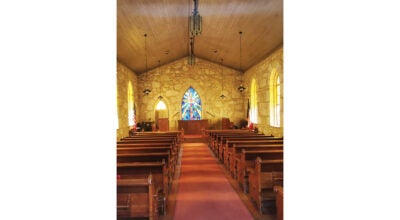Meth labs complicate firefighting
Published 5:00 am Monday, June 16, 2003
When a burning house contains a methamphetamine laboratory,don’t expect firefighters to risk their lives saving the home.
That’s the warning issued by area firefighters to abusers andmanufacturers of the drug.
“If we knew there was a meth lab in there, we wouldn’t go in.We’d let it burn,” said Monticello Fire Chief Wayne Harrison,citing a policy common among fire departments throughout thenation. “There is a lot of concern among firefighters aboutthis.”
Brookhaven Fire Chief Paul Cartwright agreed, adding that safetyis more important than property in those situations.
“In a situation like that,” he said, “you’re better off backingoff, controlling the situation and letting it burn.”
The primary concern of firefighters, Harrison said, is savinglives. That complicates a fire scene where a meth lab is known tobe established in the home.
People trapped in a burning building with a lab inside puts thefirefighters in a moral dilemma. They can ignore the fire and praythe people escape, or they can add even more danger to theiralready hazardous jobs by going in after them.
There is really no choice to make, Harrison said.
“I would be forced to try to go in and get them,” he said. “It’sa very dangerous and awkward situation.”
What makes the situation more dire is that the chemicals used inmeth production are flammable, volatile, toxic and corrosive.
“It is unreal the risk factor people will toy with in makingthis stuff,” Cartwright said. “People do crazy things.”
In addition to the flames and chemical explosions firefightersare exposed to in any household fire, when a meth lab is in thebuilding, they must also prepare to face potentially lethal toxicfumes and corrosive chemicals that can eat through theirfire-retardant turnout gear.
“Our rebreathers can protect us from the toxic and corrosivefumes, and the turnout gear provides some protection against thecorrosive liquids, but the danger is real,” Harrison said.
Cartwright agreed.
“It is just one of the risks we have in this profession,” hesaid, citing paint, gasoline and other flammable or volatilechemicals often found in or near homes.
Nor are the chemicals the only threat facing firefighters. Theymust also be prepared for the unexpected.
It is common for meth labs to be protected by booby-traps set toensnare law enforcement officers and other meth cooks. Firefighterscan become the untargeted victims of the meth user’s paranoia.
“Our problem is they booby-trap everything,” Harrison said.”They set them for the lawmen, but when there’s a fire, we stumblein and — Wham! — it’s the fireman who gets it.”
Fortunately, he said, the traps have not been a major problem sofar.
“We’ve been lucky,” he said. “We haven’t come across any realbooby-traps so far.”
He admitted, though, that the county has very little experiencewith fires and meth labs. He suspects they have fought fires atseveral, but can be sure of only one.
“There is an odor when they’re cooking it that you can smell ifyou’re aware of it. That’s a giveaway,” he said.
The confirmed meth lab fire occurred only about six to eightmonths ago at a house on Highway 27 South, Harrison said. He isconvinced the fire was caused when the lab exploded.
“It had stuff scattered out in the yard,” he said. “There wassome sort of explosion inside the house.”
He didn’t recognize it as a lab until after the fire wasextinguished, despite the debris strewn in the yard commonly usedin meth production. It was during the investigation of the firethat he discovered it was a lab.
“There are certain things you can look for before you go in,such as bottles and air containers, but most of the time you won’tknow (it’s a lab) until after it’s over with,” Harrison said.
Cartwright said he has not seen many in Brookhaven either, buthe has noticed a disturbing trend.
“You see more of this popping up,” he said. “It’s something youhave to be aware of on a day-to-day basis.”
The Mississippi State Fire Academy in Jackson provides a 12-hourfire school that includes training in identifying and fighting firenear a meth lab, he said.
Entitled “Response to Drug Labs, Radiation, and PesticideRelated Emergency,” the course is designed to inform the emergencyresponder of how to respond to incidents involving hazardousmaterials. It is an intermediate level course.
“The course covers preplanning, hazards and control of thesetype incidents on an operational level. The student must have agood background in basic hazardous materials response,” accordingto the course curriculum guide.
“They try to teach you to recognize one when you walk into itand prepare you for what to do when one is identified,” Harrisonsaid.
Lawrence County is well prepared for these incidents when theydo occur, he said. Approximately 45 firefighters in the county,nine in Monticello’s department, have taken the course.
Cartwright said he didn’t know those numbers for Brookhaven, buthe did know that many firefighters had received the training.
Editor’s Note: Meth destroys the lives and families ofabusers. The final part in this series will tell the story of aperson who refers to himself as a “common” meth user.





